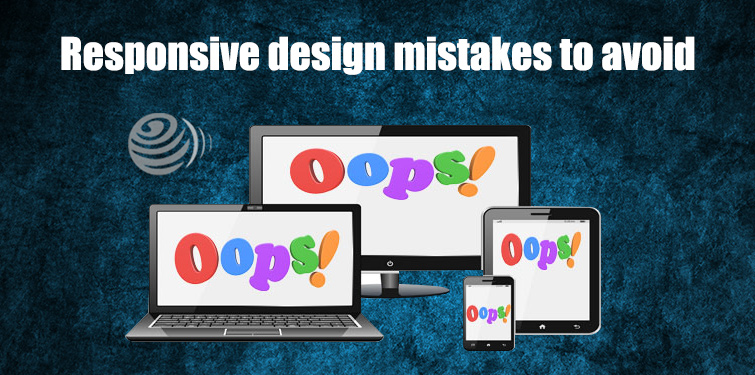Responsive Design Mistakes We Should Not Make

This is owing to the fact that the nature of an intuitive and coherent mobile-optimized design dictates a few rules that must be followed to ensure that things go smooth.
Let’s have a look at the most common responsive design mistakes and tips on how to avoid them.
Background images and icons
Images add to the design offering users a better viewing experience. However, as a responsive design is created, it becomes crucial to maintain the flexibility of images and icons. With flexible images you get striking graphics as you view them on a high pixel density device. As a responsive site is designed, designers need to look after the fact that images don’t appear blurry and are scaled in an accurate manner offering brilliant appeal.
This is extremely easy to optimize images that don’t load fast just by reducing the HTTP number and SVG format is then used to scale icons in a suitable manner. Retina-ready images work best in order to capture users’ attention.
Navigation
Navigation is among the most crucial aspects of responsive design, hence it’s necessary to handle it carefully. You will come across people who have good knowledge of the three bars placed at the top the page while there you will find various users yet struggling with website navigation, mainly those with complex architecture. This is the reason that designers must have a logical approach in order to create a responsive navigation that very well engages their visitors. Designers must endeavor to build an easy navigation as well enough time must be devoted to understand user behavior and website architecture that tells the entire purpose of a navigation, which must be built as per your visitors’ behavior and the kind of website being run by you.
Furthermore, you can make a responsive site look clean and accessible on small screen devices by letting go of unnecessary links. This way, there is no need to fret over the navigation on your website. So, just keep it simple and mobile-optimised.
Content is hidden from users
A single code is shared by responsive websites thus content parity can be achieved effectively. However, you still find various responsive sites that hide or remove content for smaller screens so that a variety of constraints can be tackled. You will come across such issues more on websites comprising of complicated elements, heavy features, data tables, third party scripts and so on. People have various expectations from you as they visit your website and it must be ensured that their goals are easily attained.
Even if you choose to hide some specific content, such as background images, it should be decided based on your website as well as your visitors’ needs. Analyze each aspect carefully rather than hiding content in not a logical manner. Also, planning is required, which determines an accurate arrangement of content that doesn’t force developers to intentionally hide content from users.
Developers are required to consider optimization and not fret over unwanted elements as this way mobile users get access to all the required information. Thus, focus must be on a website structure and prioritize elements that are easy to render.
No need to trust the device
Well, it’s not easy to understand what device users are using as well as there is no control over the dimension of different devices. This way, designers often fail to get the expected results. Hence your content must have that much of liberty that logical breakpoints can be defined.
Usage of many resources
It’s advised to not overburden a responsive design with lot many of unnecessary resources as that slow down the website performance as well as its responding time. Responsive design is related to traffic from desktop as well as mobile devices, and owing to the same extra efforts must be put by the designers to ensure that only required resources are loaded to their visitors on both mobile as well as desktop devices.
By taking care of device specifications and resources needed to load pages quickly, designers can easily deal with this issue. Besides, implementation of techniques such as concatenating CSS and JavaScript with the help of tools like Sass and Uglify is helpful in producing a speedy mobile site. Compressing CSS works well in offering a fast loading website immediately to the users.
Conclusion: Now as we know that responsive design is essential, hence it must be ensured that you do it rightly. These points will help of avoid the most common mistakes made while making a responsive design.

 Arun
Arun







